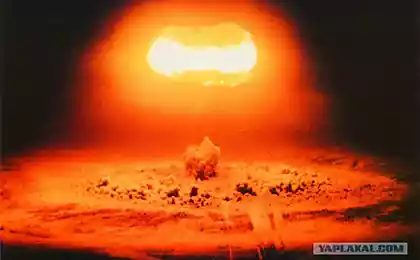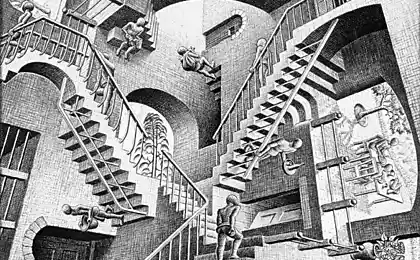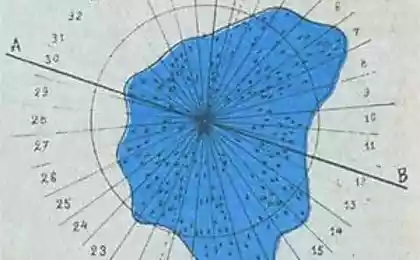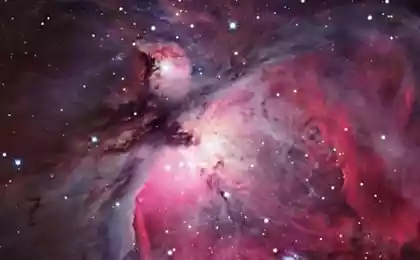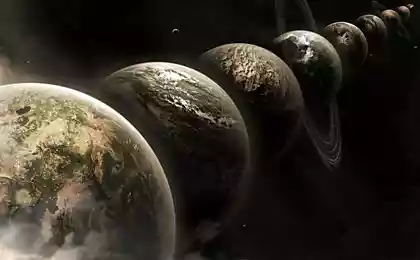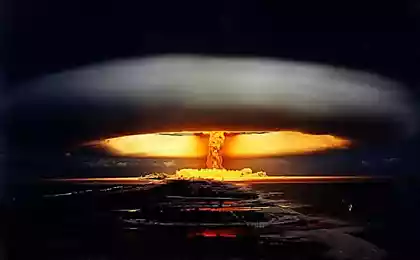617
Goodbye Big Bang
Theoretical physicists believe that the universe was not born in the Big Bang, as a result of the conversion of the four-star into a black hole, which gave rise to the emission of "garbage". From this litter was born and our universe.
Physicists Rajesh Purhasan (Razieh Pourhasan), Niiesh Afshordi (Niayesh Afshordi) and Robert Mann (Robert B. Mann) have proposed a new theory of the birth of the universe. This theory, for all its complexity, explains many of the problem areas in the modern understanding of the universe.
According to conventional theory, the birth of the universe, it was born from an infinitely dense point, or singularity powerful extension - the Big Bang. This theory agrees well with the observed pattern of space, especially with the expansion of the universe. However, the Big Bang theory, there are problem areas. For example it is not clear how the singularity of the Universe made with nearly the same temperature in different parts. The age of our universe all around 13, 8 billion. Years, which is not enough to achieve the observed temperature equilibrium. Most cosmologists are appealing to the fact that the universe was expanding faster than the speed of light, but Niiesh Afshordi emphasizes that the Big Bang was a very chaotic and it is not clear how the result could be formed at least one more or less extended portion of a uniform temperature.
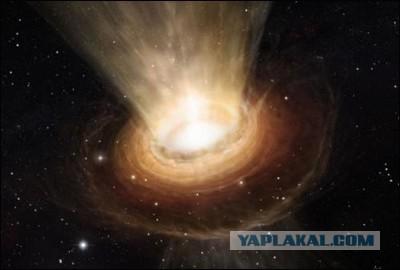
The new model explains the birth of the universe puzzle. The new three-dimensional model of the universe as a membrane floating in the universe, which has four dimensions. In fact, our universe - is selected from string theory, that is multi-dimensional physical object dimension less than the dimension of the space. It is hard to imagine, can only simplify the presentation, imagine if our universe in three-dimensional two-dimensional sheet of the universe.
The four-dimensional universe, of course, has a four-star, who can live the same life cycle as the three-dimensional in our universe. The most massive stars at the end of the four-dimensional life will explode supernova and become a black hole.
In its turn, would have a four-hole event horizon, as well as three-dimensional black hole. The event horizon is the boundary between inside and outside the black hole. The three-dimensional event horizon of the universe appears as a two-dimensional surface in four-dimensional universe and the event horizon is a three-dimensional hypersphere.
Thus, when the four-star explodes from the remaining material on the event horizon forms a three-dimensional brane - the universe similar to ours. This is quite unusual for the imaging model may explain why the universe is almost the same temperature: a four-dimensional universe that produced a three-dimensional, there was a much longer 13, 8 billion. Years.
The new theory is difficult to perceive from the perspective of a man who used to think of the universe, as vast infinite space. It's hard to accept that our universe may be just a local perturbation, "a leaf on a pond" huge old four-hole.
Figure supermassive black hole at the heart of the galaxy NGC 3783. Perhaps our universe is a byproduct of random fluctuation on the event horizon of a black hole four-
Source:
Physicists Rajesh Purhasan (Razieh Pourhasan), Niiesh Afshordi (Niayesh Afshordi) and Robert Mann (Robert B. Mann) have proposed a new theory of the birth of the universe. This theory, for all its complexity, explains many of the problem areas in the modern understanding of the universe.
According to conventional theory, the birth of the universe, it was born from an infinitely dense point, or singularity powerful extension - the Big Bang. This theory agrees well with the observed pattern of space, especially with the expansion of the universe. However, the Big Bang theory, there are problem areas. For example it is not clear how the singularity of the Universe made with nearly the same temperature in different parts. The age of our universe all around 13, 8 billion. Years, which is not enough to achieve the observed temperature equilibrium. Most cosmologists are appealing to the fact that the universe was expanding faster than the speed of light, but Niiesh Afshordi emphasizes that the Big Bang was a very chaotic and it is not clear how the result could be formed at least one more or less extended portion of a uniform temperature.

The new model explains the birth of the universe puzzle. The new three-dimensional model of the universe as a membrane floating in the universe, which has four dimensions. In fact, our universe - is selected from string theory, that is multi-dimensional physical object dimension less than the dimension of the space. It is hard to imagine, can only simplify the presentation, imagine if our universe in three-dimensional two-dimensional sheet of the universe.
The four-dimensional universe, of course, has a four-star, who can live the same life cycle as the three-dimensional in our universe. The most massive stars at the end of the four-dimensional life will explode supernova and become a black hole.
In its turn, would have a four-hole event horizon, as well as three-dimensional black hole. The event horizon is the boundary between inside and outside the black hole. The three-dimensional event horizon of the universe appears as a two-dimensional surface in four-dimensional universe and the event horizon is a three-dimensional hypersphere.
Thus, when the four-star explodes from the remaining material on the event horizon forms a three-dimensional brane - the universe similar to ours. This is quite unusual for the imaging model may explain why the universe is almost the same temperature: a four-dimensional universe that produced a three-dimensional, there was a much longer 13, 8 billion. Years.
The new theory is difficult to perceive from the perspective of a man who used to think of the universe, as vast infinite space. It's hard to accept that our universe may be just a local perturbation, "a leaf on a pond" huge old four-hole.
Figure supermassive black hole at the heart of the galaxy NGC 3783. Perhaps our universe is a byproduct of random fluctuation on the event horizon of a black hole four-
Source:
